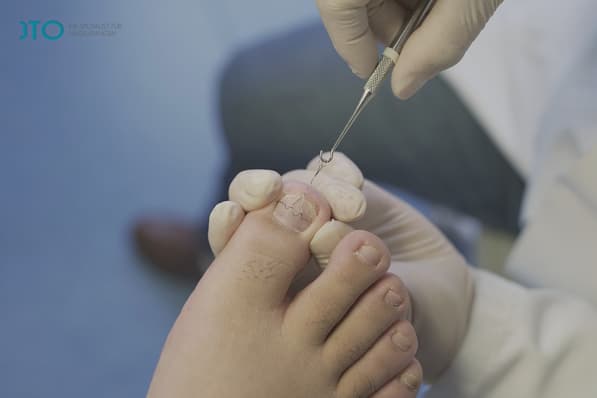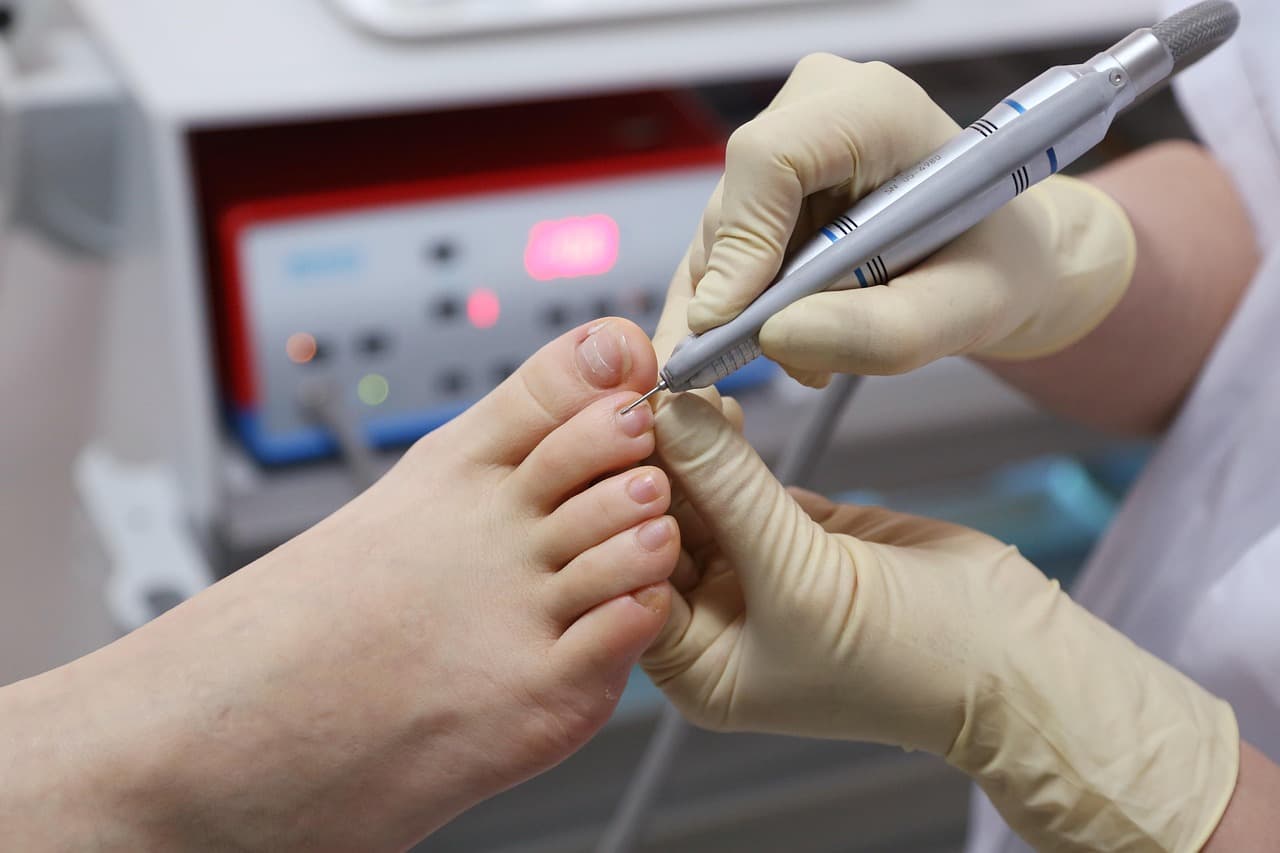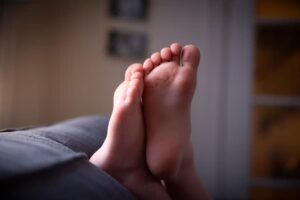Feet are the foundation of our movement and overall health. Every day, they endure a gigantic load: supporting our body weight, helping us walk, run, climb stairs, stand in lines, and even dance at a party. In contrast to how easy it is to find casinos sin licencia in Spain, finding time to take care of your own feet is somehow always more difficult.
And after all, feet give us signals of problems long before the situation becomes serious. Sometimes even a slight discomfort can indicate the beginning of a disease, which is easier to treat at an early stage. In this article, we will tell you about 10 signs that you should pay attention to and that will tell you it’s time to see an orthopedist.
1. Chronic pain in the legs or feet
Foot pain after a long walk or day at work happens to many people. But there’s a difference between normal fatigue and pain that signals a problem.
When you should be alert:
- The pain persists for more than 2-3 weeks and does not go away even after rest;
- discomfort even at rest or at night;
- pain increases when walking or running.
It may be due to:
- flat feet (even if they are minor) (the reduced arch of the foot changes the load distribution and provokes pain)
- tendon inflammation (often occurs in people who walk a lot or play sports)
- Arthritis or osteoarthritis of the joints (inflammation or wear and tear of the joints can limit mobility and cause chronic discomfort)
- Microtrauma to bones or muscles (minor injuries often go unnoticed, but eventually lead to pain)
Tip: don’t delay a visit to an orthopedist if pain is interfering with normal life. The sooner you understand the cause, the easier and faster the treatment will be.
2. Swelling and redness
Slight swelling of the legs in the evening is a familiar phenomenon, especially for those who spend a lot of time standing. But if the swelling
- appears suddenly,
- persists after sleep or rest,
- accompanied by redness and heat in the skin,
which can indicate serious problems:
- joint inflammation (arthritis, gout) (accompanied by pain, redness and increased temperature of the skin around the affected area)
- venous thrombosis (a dangerous condition that poses a risk of blood vessel blockage and requires immediate medical attention)
- Ligament or bone injury (even minor injuries can lead to swelling and limited mobility)
What to do: try raising your legs above the level of your heart for 15-20 minutes. If the swelling does not decrease or pain occurs, see a specialist.
3. Finger deformity or “bump” in the thumb
If the big toe begins to “go away” to the side, and at its base there is a noticeable bulge (the “bone”), this is a valgus deformity. Also possible:
- hammer toes (this curvature of the toes is often caused by wearing tight shoes or muscle imbalances)
- crossed toes (the toes overlap, which causes discomfort when walking and chafing of the skin)
- corns and calluses on the sides of the feet (these are caused by constant pressure and friction, and also signal improper foot placement).
Why it is important: at an early stage you can do with conservative treatment – insoles, correctors, special gymnastics. If delayed, the deformity will progress and may require surgery.
Tip: do not wear narrow and stiff shoes – they make the problem worse.

4. Cracks and calluses that won’t heal
Many people associate cracked heels or calluses with dry skin and improper footwear. But if they:
- take a long time to heal,
- become deep and painful,
- appearing regularly in the same place.
this may indicate
- Improper load distribution on the foot (this occurs with flat feet or wearing uncomfortable shoes and leads to cracks and calluses)
- poor circulation (poor blood flow slows tissue healing and makes the skin more vulnerable)
- Diabetes or fungal infection (diabetes affects blood vessels and nerves, and fungus weakens the skin barrier, causing cracks)
What to do: The podiatrist will help you choose insoles to relieve the problem areas and refer you for tests if necessary.
5. Numbness or tingling
If you feel “goosebumps,” tingling, or temporary loss of sensation in your toes, it’s not always just an uncomfortable posture. Possible causes:
- nerve compression in the lower back (sciatica) (nerves traveling to the legs may be trapped in the spine, causing numbness and pain)
- Diabetic neuropathy (damage to nerve endings due to high blood sugar levels – one of the most common complications of diabetes)
- Blood flow disorders (poor blood supply to tissues leads to a sensation of cold, tingling or loss of sensation)
Attention! If numbness occurs frequently and is accompanied by pain, it is better to undergo an examination.
6. Gait disturbance
A person rarely notices how they walk. But if you or others around you have noticed that:
- you’ve started to limp,
- the foot is lodged inward or outward,
- and a sluggish or slow gait,
this could be a signal of:
- joint problems (arthritis, osteoarthritis) (inflamed or worn joints can cause pain and affect the way you place your foot when you walk)
- Muscle weaknesses (weakened muscles in the foot or lower leg do not support the joints properly, causing changes in your gait)
- old injuries (untreated injuries to ligaments, bones or tendons often show up years later).
Tip: the longer you wait to see a doctor, the more strain you put on your spine and knees.
7. Limitation of joint mobility
Stiffness in the feet or fingers in the morning often indicates inflammation. If:
- it is difficult to bend or straighten the joints (stiffness may be caused by inflammation of the joint sheaths or fluid buildup)
- pain when turning the foot (this indicates irritation of the cartilage or inflammation of the soft tissues around the joint)
- you have to “work” your foot before moving (morning stiffness is characteristic of arthritis and often decreases after warming up).
This may be the beginning of arthritis.
What to do: early diagnosis can help avoid cartilage breakdown and regain mobility.
8. Unusual joint sounds
Clicking or crunching sounds in the joints of the foot when you move can be alarming. If the sounds are accompanied by:
- swelling (the appearance of swelling around a joint may indicate inflammation or fluid accumulation)
- pain (painful sensations when moving or at rest often accompany degenerative processes)
- limitation of movement (reduced joint mobility indicates deterioration of cartilage tissue)
it may be the beginning of osteoarthritis or a consequence of microtraumas.
Tip: don’t wait for the situation to get worse – the disease is easier to treat in its early stages.
9. Frequent leg cramps
Cramps are familiar to everyone. But if they’ve started happening
- regularly (especially at night),
- accompanied by pain or swelling,
the causes may be as follows:
- mineral deficiency (potassium, magnesium, calcium) (when these elements are deficient, muscles become more excitable and prone to spasms),
- varicose veins (blood stagnation worsens muscle nutrition and increases the risk of spasms),
- problems with nerves or blood circulation (impaired conduction of nerve impulses or poor blood flow can provoke cramps).
What to do: the doctor will prescribe tests and choose a treatment depending on the cause.
10. Abrupt change in the shape of the foot
If the arch of the foot has become lower, there are bulges, bumps or thickenings – it can be:
- a consequence of trauma (even an old, “minor” injury can cause bones to shift and change the biomechanics of the foot),
- inflammation (swelling of soft tissue or joints can deform the contour of the foot),
- development of flat feet or bone deformities (the arch of the foot loses elasticity, causing the load to be distributed incorrectly and painful lumps to develop).
Why it’s important to come in right away: the change in foot shape affects your gait and can cause knee and back pain.

